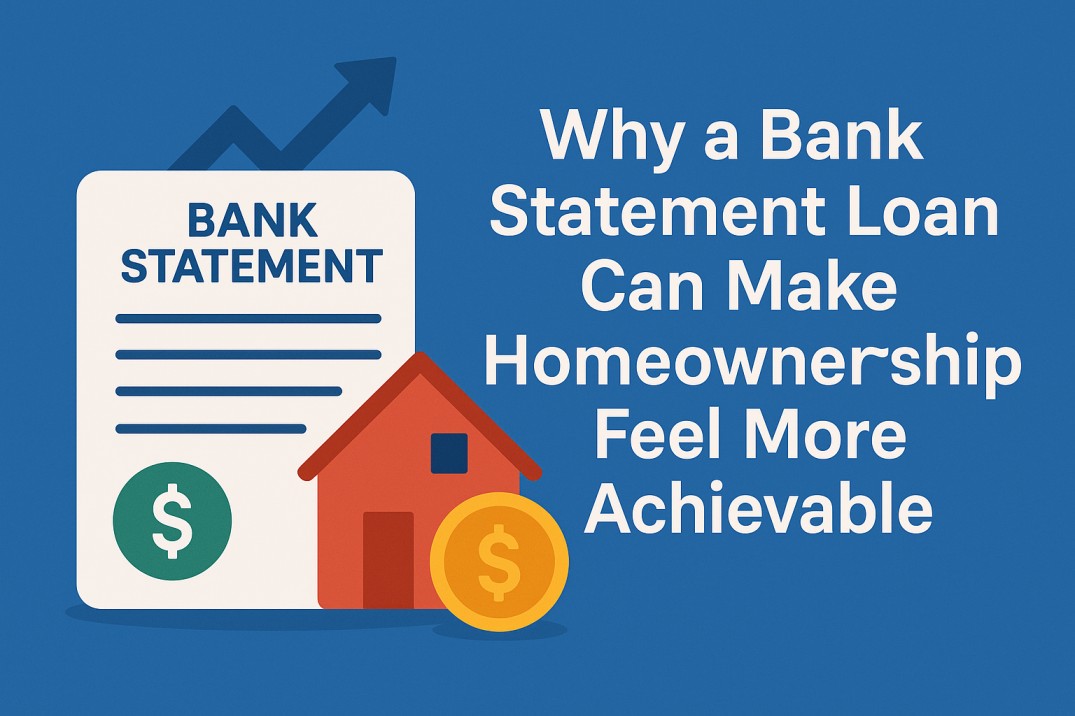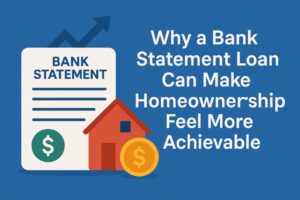Buying a home feels different when you’re self-employed. One moment you’re confident, and the next you’re staring at your tax returns wondering why they make you look like you earn far less than you actually do. That’s where a bank statement loan becomes a genuinely reassuring option. Instead of relying on reduced taxable income, it highlights the real flow of money entering your accounts — the version of your income that actually reflects your day-to-day work.
It’s a lending approach that understands the reality of modern earning styles.
How a bank statement loan works
The structure is simple. Instead of tax returns or piles of payslips, lenders review 12–24 months of bank statements. Those statements reveal income patterns, seasonal behaviour, and the real stability behind your business.
Why lenders rely on this method
Bank statements show things that traditional paperwork doesn’t: consistency in deposits, natural ups and downs, and genuine cash flow. This approach falls under what’s known as alternative documentation lending, and you can get a wider picture on the Mortgage loan overview page on Wikipedia, which explains how different documentation types evolved over time.
Who benefits most from a bank statement loan
The most helpful thing about this loan type is how well it matches today’s working world. Many people earn from flexible schedules, mixed income streams, or creative careers that don’t fit old-style financial checklists.
Self-employed professionals
Freelancers, independent consultants, tutors, designers — anyone whose income goes up and down depending on projects.
Small business owners
Tax deductions reduce taxable income, but your deposits show the truth. Bank statements reflect business strength better than tax forms.
Gig and platform workers
Rideshare drivers, delivery earners, online freelancers and creators often discover that statements capture their income accurately, even when it’s spread across several sources.
Side-hustlers
Income coming from different streams still looks stable when deposits stay consistent over time.
What lenders typically examine
Lenders don’t dissect every minor detail in your statements. They look at long-term behaviour — how your income behaves over months rather than days. They check average deposits, occasional spikes, regular expenses and anything unusual that needs a quick explanation. It’s a more realistic way of understanding how you actually earn.
This usually feels far less stressful than dealing with strict tax return requirements.
Why many borrowers prefer a bank statement loan
A big reason is emotional — it finally feels like a loan that understands how you really work and earn.
Less paperwork
No need for years of tax returns. Bank statements do the heavy lifting.
Reflects real earning power
Tax deductions don’t hide your income here. Deposits speak for themselves.
Designed for modern work patterns
Income variations aren’t a problem when the overall pattern shows stability.
Often faster processing
With fewer documents to verify, lenders can make decisions more quickly.
If you want to explore the structure and qualification details in more depth, you can look into the bank statement loan options provided by Clear Rate Mortgage, where the concept is broken down in a simple, borrower-friendly way.
Things to think about before applying
Even though the flexibility is refreshing, it’s still important to understand what comes with it.
Slightly higher interest rates
Because documentation is more flexible, lenders sometimes charge slightly higher rates.
Larger down payment in some cases
Not always, but a higher deposit may be requested to balance the lender’s risk.
Minimum income expectations
If your income has very sharp dips, you may need to provide context behind them.
Deposit consistency
Even if your work is irregular, your overall cash flow should reflect stability across the year.
How to prepare your bank statements
A little preparation helps speed up the approval process.
Separate accounts if possible
Keeping business and personal transactions separate makes things much easier for lenders to read.
Keep deposits consistent
Regular deposits — even from different sources — show earning stability.
Clarify unusual activity
If a big transfer appears, just be ready to explain it.
Collect 12–24 months
Most lenders want at least a year’s worth of statements to understand your overall earning behaviour.
The wider lending context
Even alternative documentation mortgages operate within federal lending standards. According to the official CFPB mortgage guidance, lenders offering flexible documentation must still follow fair and responsible underwriting rules. That means borrowers get flexibility without losing the protection of regulated lending practices.
Why this loan makes homeownership feel possible
What makes a bank statement loan so meaningful is the way it recognises your real financial life — not the version edited down for tax season. It acknowledges that income today is dynamic, sometimes unpredictable, but often more stable over the year than traditional paperwork suggests.
For countless self-employed people, this shift in perspective is exactly what makes homeownership finally feel within reach.
FAQs
- How many months of statements do lenders need?
Usually 12–24 months, depending on how steady your income is throughout the year. - Do I need both personal and business statements?
Not necessarily. You qualify using whichever account best shows your income. - Are these loans only for self-employed borrowers?
Mostly. But gig workers and contract earners often qualify as long as their deposits show consistency. - Are interest rates higher?
Slightly, because documentation is more flexible — but many borrowers find the trade-off worth it. - Can I qualify if my income changes monthly?
Yes. Lenders expect variations. They focus on long-term stability, not identical monthly figures.
Closing takeaway
If traditional mortgage paperwork has ever made you feel misunderstood, a bank statement loan could be the approach that finally fits your financial reality. When lenders look at your true income flow instead of your reduced taxable income, the path to owning a home becomes far more realistic.









